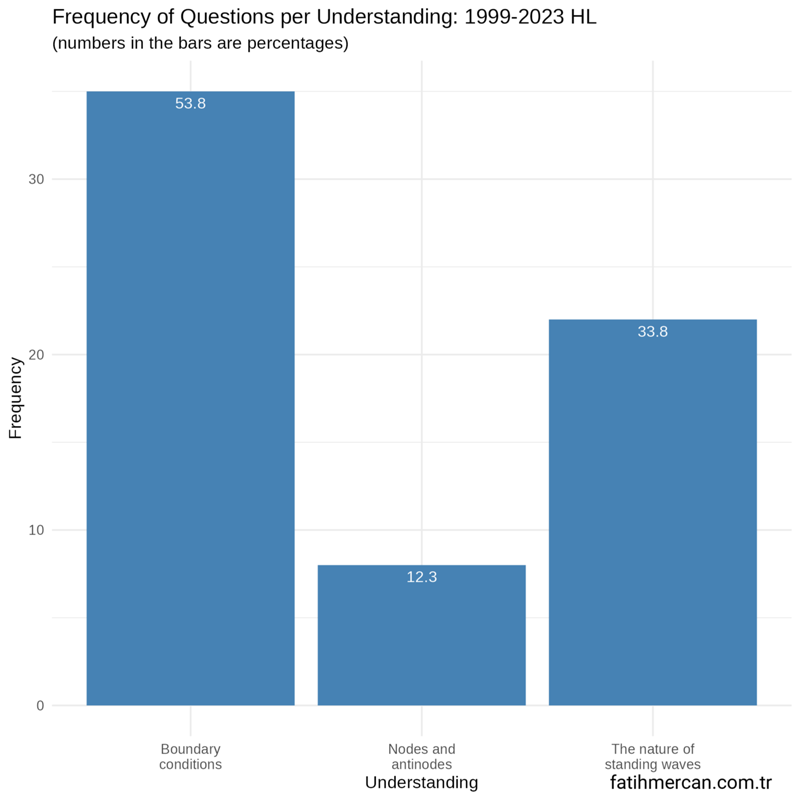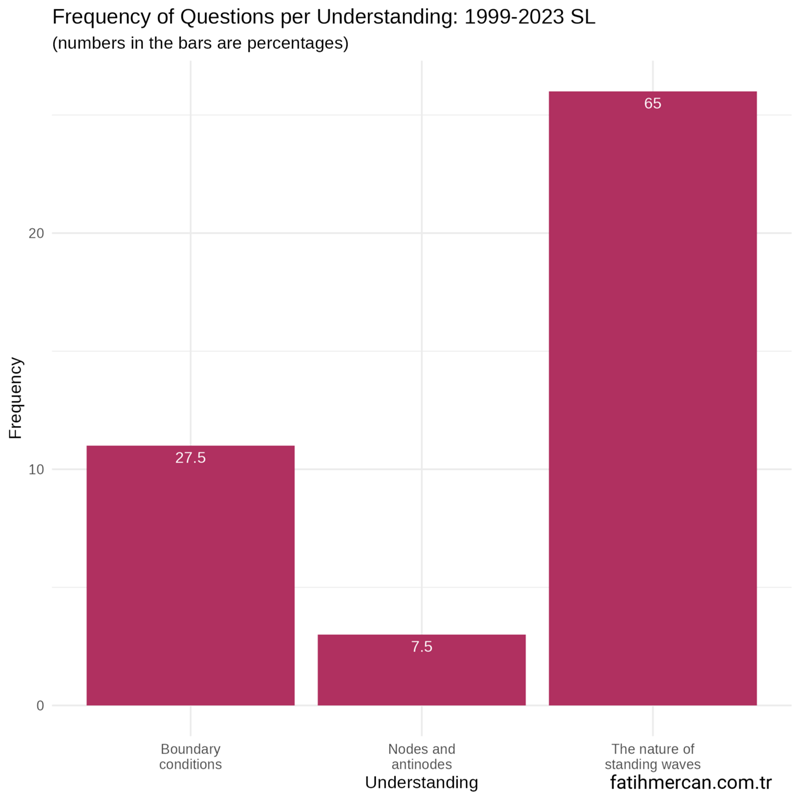In IB Physics First Assessment 2016, standing waves is a subtopic of Topic 4 waves. This subtopic has the following understandings associated with it.
- The nature of standing waves
- Boundary conditions
- Nodes and antinodes
In this part of the analysis, I am particularly interested in “What is the frequency distribution of the questions concerning standing waves understandings?”
Frequency distribution of questions by standing waves understandings for HL
Between 1999-2023
For the entire dataset for HL, almost half of the questions came from boundary conditions. About one-third of the questions came from the nature of standing waves. Nodes and antinodes were the least assessed understanding.

Figure 1
Between 2016-2023
Between these years, one difference is nodes and antinodes are not assessed at all.

Figure 2
Frequency distribution of questions by wave behaviour understandings for SL
Between 1999-2023
For the entire dataset for SL, more than two-thirds of the questions came from the nature of standing waves. Nodes and antinodes was the least assessed understanding.

Figure 3
Between 2016-2023
Between these years, the distribution remained almost the same compared to the entire dataset for SL.

Figure 4
Where to go from here?
You may want to check out the other related subtopics:
- Oscillations
- Travelling waves
- Wave characteristics
- Wave behaviour
- Standing waves
If you are interested in more detailed analyses of the topics:
- Measurement and uncertainties
- Mechanics
- Thermal physics
- Waves
- Electricity and magnetism
- Circular motion and gravitation
- Atomic, nuclear and particle physics
- Energy production
- Wave phenomena
- Fields
- Electromagnetic induction
- Quantum and nuclear physics
This work/product/service has been developed independently from and is not endorsed by the International Baccalaureate Organization. International Baccalaureate, Baccalauréat International, Bachillerato Internacional and IB are registered trademarks owned by the International Baccalaureate Organization.
